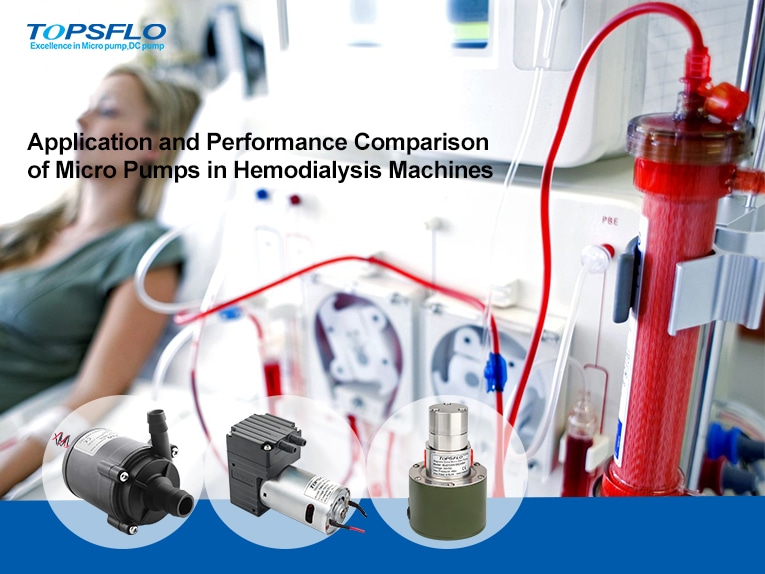
#Industry News
Application and Performance Comparison of Micro Pumps in Hemodialysis Machines
Hemodialysis Machines Pump
Application and Performance Comparison of Micro Pumps in Hemodialysis Machines
● Introduction:
Hemodialysis, a critical medical intervention for individuals with kidney failure, relies on advanced technology to purify blood effectively. Micro pumps play a pivotal role in hemodialysis machines, facilitating optimal blood flow and pressure regulation. In this article, we will explore three distinct types of micro pumps commonly employed in hemodialysis machines: brushless centrifugal pumps, diaphragm pumps, and gear pumps.
1. Micro Brushless Centrifugal Pumps:
Brushless centrifugal pumps form an integral part of hemodialysis machines due to their efficiency and reliability. Operating without brushes reduces wear and tear, contributing to their longevity. These pumps leverage centrifugal force generated by the impeller, ensuring a continuous and smooth blood flow throughout the dialysis process. Noteworthy for their ability to achieve high flow rates with minimal power consumption, brushless centrifugal pumps are instrumental in optimizing the performance of hemodialysis machines.
2. Miniature Diaphragm Pumps:
Diaphragm pumps, with their pulsation-free operation, provide a consistent and gentle blood flow during dialysis. Employing a flexible diaphragm, these pumps create a vacuum that draws blood into the system and expels it without causing damage to blood cells. The smooth pumping mechanism is crucial for preventing complications and ensuring the safety of the hemodialysis procedure. Diaphragm pumps stand out for their reliability and are well-suited for the delicate nature of blood circulation in hemodialysis applications.
3. Micro Gear Pumps:
Gear pumps contribute to the maintenance of pressure levels during hemodialysis with their precise and controlled flow capabilities. These pumps transfer blood between interlocking gears, ensuring a constant flow rate. Their ability to handle viscous fluids makes gear pumps well-suited for the unique demands of blood circulation. Robust in construction and reliable in operation, gear pumps play a crucial role in the overall efficiency and success of hemodialysis machines.
● Comparative Analysis:
Each type of micro pump brings unique strengths to the hemodialysis setting. Brushless centrifugal pumps excel in efficiency and reduced wear, diaphragm pumps offer pulsation-free operation and gentle blood flow, while gear pumps provide precise control and reliability. The interplay between these pumps is carefully orchestrated to achieve optimal performance in hemodialysis machines. Decisions on pump selection are guided by the specific requirements of individual scenarios.
● Challenges and Innovations:
The field of micro pump technology for hemodialysis is not without challenges. Ongoing research and development efforts aim to address issues such as biocompatibility, power consumption, and size. Innovations in pump design continue to push the boundaries, promising improved patient outcomes and enhanced overall system efficiency. The future holds exciting possibilities for advancements in micro pump technology in the context of hemodialysis.
● Conclusion:
In conclusion, the trio of brushless centrifugal pumps, diaphragm pumps, and gear pumps constitutes the backbone of micro pump technology in hemodialysis machines. Their collective contributions ensure the smooth and efficient operation of these life-saving devices. As technology continues to evolve, further innovations in micro pump design will likely enhance the capabilities and safety of hemodialysis procedures, ultimately benefiting patients with kidney failure.







